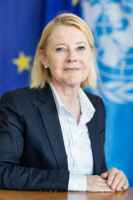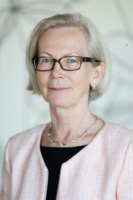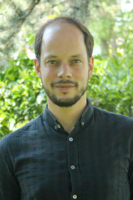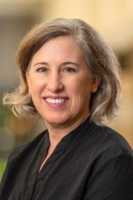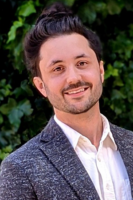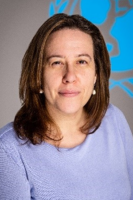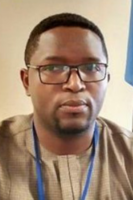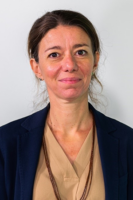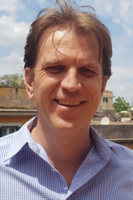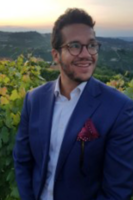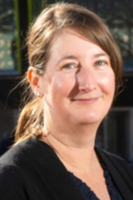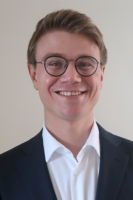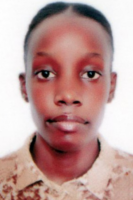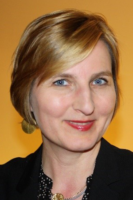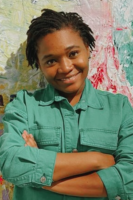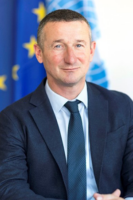With over 20 years of experience working in the Somali Region, Interpeace and its partner organizations have supported and advanced state-building and peacebuilding processes. Our work has helped transform dialogue into action in the interest of communities across the region, by convening a wide range of stakeholders in neutral political spaces. Interpeace’s long term institutional partners, the Academy for Peace and Development (APD) in Somaliland and the Puntland Development Research Center (PDRC) in Puntland, have ensured local ownership in our peacebuilding approach.
The Somali Programme consists of two main and interconnected programmes – Pillars of Peace and Democratization. With the objective to build social cohesion, the Pillars of Peace Programme, established in 2009, seeks to strengthen the ability of grassroots communities to connect and provide input into evolving governance structures. The Democratization Programme, ongoing since 2011, builds on the work of the Pillars of Peace Programme, focusing on state reconstruction, aiming to increase public trust and strengthen democratic institutions. Together, these programmes have played a major role in building bridges between local communities and their leaders at all levels.
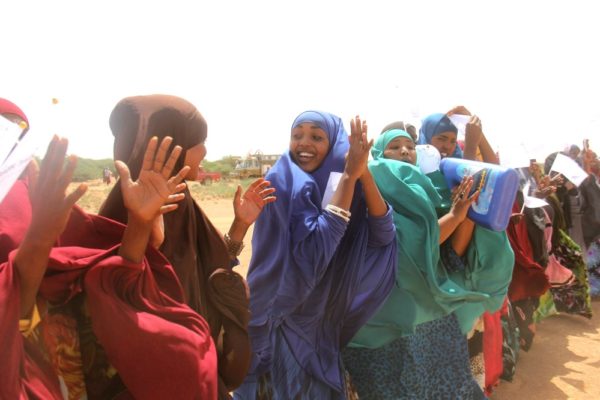
Puntland. Photo credit: PDRC
Over the past decade, Interpeace and its Somali partners have demonstrated continued relevance and resilience in the region, being part of several key achievements. In 2010, Interpeace supported Somaliland’s National Electoral Commission as its lead international technical advisor for the successful delivery of the presidential elections. APD played a key civil society role at every level of the process, including political mediation and strengthening electoral laws. In 2012, Interpeace supported the Transitional Puntland Electoral Commission in the process leading up to the ratification of a revised Puntland Constitution. Building on this basis, it worked with the Commission to lay a strong foundation from which to pursue local council elections. In the meantime, PDRC made important contributions to voter education, media preparedness and managing political sensitivities. In 2014, Interpeace began its re-engagement in the south and central regions of Somalia through the establishment of a Peacebuilding Team in the capital of the Jubaland State of Somalia. As of December 2015, the Interpeace Peacebuilding Team (IPT) has grown to include an office in Mogadishu, with a capacity to operate across south and central Somalia.
Interpeace also worked closely with key actors in the Federal Government of Somalia and the federal states, providing facilitation training to civil servants across different ministries to assist in the development of key dialogue and consultation processes around the 2016 election process and wider state-building initiatives. In Somaliland, Interpeace’s partnership with the National Electoral Commission has provided significant support to the voter registration process. And in Puntland, Interpeace worked together with PDRC to facilitate the political process leading up to the resumption of the democratization process, through the launch of a new electoral commission.
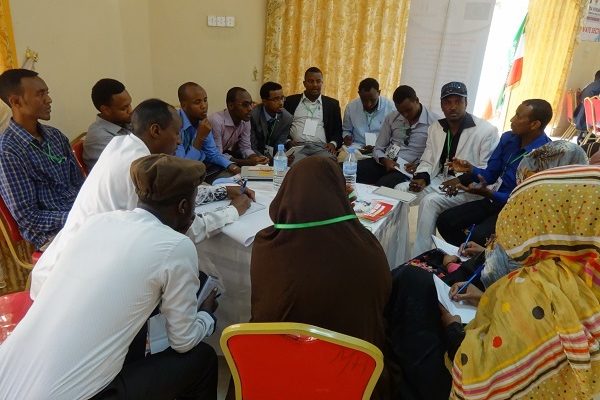
Somaliland. Photo credit: SONYO
Throughout the past two decades, we have engaged in a variety of processes to mitigate conflict. Some examples include APD’s land management process, which aims to develop legal, policy and social frameworks to prevent and resolve land-based conflict and PDRC’s Rako reconciliation process, which has given youth and women a primary role in resolving long-standing local conflict. Moreover, using communication tools such as the Mobile Audio Visual Unit (MAVU), which uses film to reach rural and marginalized communities that have limited access to information, we have promoted engagement and consultation with thousands of citizens in the region.
In the next five years, Interpeace and its partners will seek to reinforce the capacity of Somali society, both the government and citizens, to strengthen and ingrain democratic culture and practices that underpin state-building, and promote sustaining cohesion between Somalis at the local, regional and federal levels. This will be achieved by supporting effective and legitimate governance, promoting citizen ownership of democracy and peacebuilding, and enhancing the contribution of women and youth to peace and democracy.
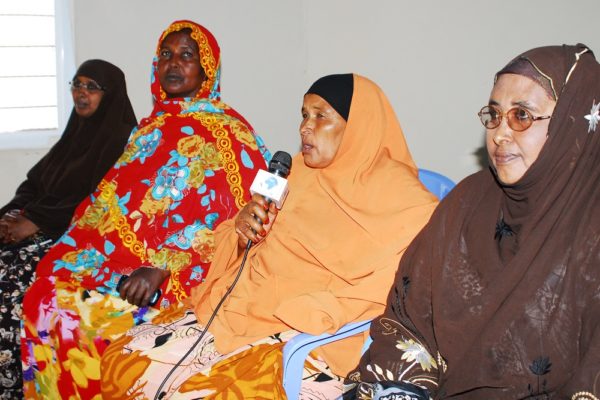
Somaliland. Photo credit: APD
Timor-Leste, one of the youngest democracies in the world, has faced numerous challenges in its journey to build sustainable peace. Recognized as an independent country fifteen years ago, in May 2002, it has faced serious political crises, violence, unemployment, and land disputes. Despite these problems, the Timorese have reached important achievements in the past five years: growth in their economy, a decrease in child mortality rates and peaceful elections. However, the Timorese are still faced with the consequences of decades of social turmoil and one of the biggest challenges that remain are food security issues. On May 30, 2017, the Centre of Studies for Peace and Development (CEPAD) in partnership with Johns Hopkins University, successfully launched a report called, “Timor-Leste Strategic Review: Progress and Success in Achieving the Sustainable Development Goal 2”, which addresses the need to improve nutritional outcomes in the country.
Research has shown that there is a clear link between conflict and food security issues. Tackling the root causes of conflict in fragile countries therefore involves addressing these challenges. The United Nations Food and Agricultural Organization (FAO) has made food security a priority and Sustainable Development Goal 2 seeks to “end hunger, achieve food security and improved nutrition, and promote sustainable agriculture.”
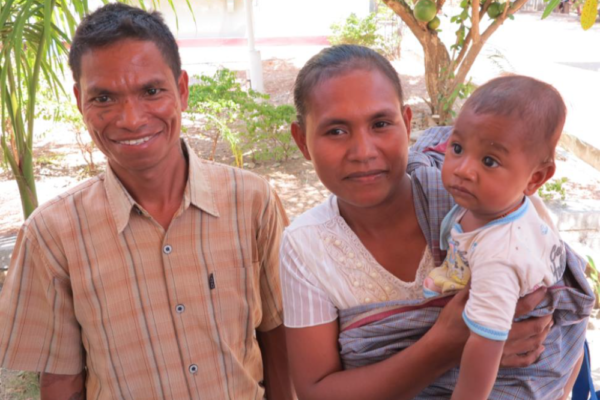
A Couple in Oecusse, Timor-Leste. Photo credit: WFP Camila Urbina-Escobar
Timor-Leste is one of the countries with the highest rates of chronic undernutrition in the world. Children and women are the most at risk of malnutrition. In 2013, 38% of children were underweight, and more than half of the nation’s children under five years old are stunted in bodies and brains. In the same year, 24.8% of women between 15-49 years old were underweight and 40% were anemic. Between 2013 and 2015, 26.9% of the country’s population experienced hunger. Moreover, Timor-Leste’s agriculture system does not produce enough food to feed the population. Factors that are contributing to this problem are unsustainable methods, poor soil fertility, land ownership issues, and farmer’s low motivation due to low profits. Additionally, the Timorese are experiencing the effects of climate change including higher temperatures and longer dry seasons.
Through the support of former President Ramos-Horta and the Bishop of Dili, a Strategic Review was undertaken by our local partner in Timor-Leste, the Centre of Studies for Peace and Development (CEPAD) and Johns Hopkins University, to determine what needs to be done to achieve Sustainable Development Goal 2 (SDG2). The Strategic Review portrays the nutrition challenges in Timor-Leste and is a mechanism that can help the government set priorities in the actions and policies implemented in the country to achieve SDG2. Moreover, it can help stakeholders develop programs to end hunger and achieve food security.
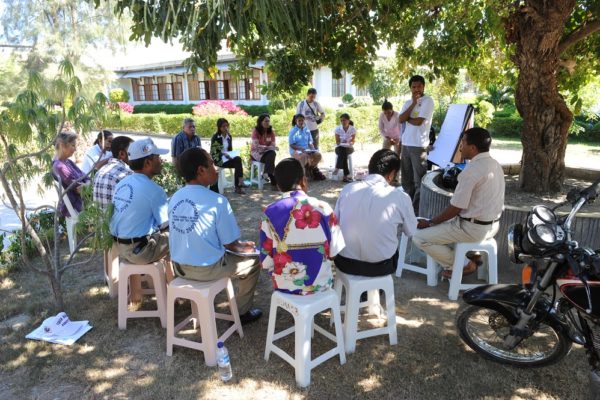
Timor-Leste. Photo credit: Steve Tickner
The Strategic Review was developed through a participatory research process, which initiated with a compilation of the most recent information and data about Timor-Leste’s nutrition, agriculture and food systems. Afterwards, the research team conducted a nation-wide consultation process with members of the government, international organizations, nongovernmental organizations, civil society organizations, as well as led community consultations. The data gathered was then analyzed to write recommendations on how Timor-Leste can progress towards achieving goal SDG2. Recommendations include ensuring national social protection programmes, improving operations and nutrition of the nationally owned School Meals Programme, improving agricultural productivity by promoting agroforestry, improving spices and coffee production, investing in women farmers, etc.
Since 2007, Interpeace has been working with CEPAD, supporting peacebuilding processes in Timor-Leste, establishing initiatives to help break cycles of violence and help create a climate where the Timorese can identify and address priority issues in non-violent ways. We celebrate CEPAD’s work and are proud of the successful launch of the Strategic Review to achieve SDG2 in Timor-Leste.
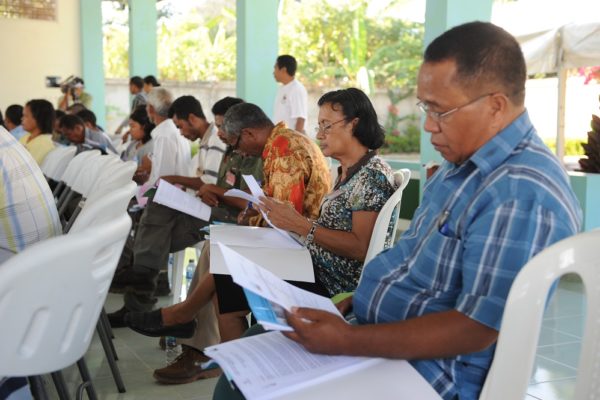
Timor-Leste. Photo credit: Steve Tickner
To read the full report visit the following link:
Timor-Leste Strategic Review: Progress and Success in Achieving the Sustainable Development Goal 2
The current round of peace talks in Cyprus has advanced further than any previous round has since the division of the island in 1974. This is a significant achievement of the Greek and Turkish Cypriot leaderships in the UN-facilitated talks – whether they are now able to reach a final agreement or not. Interpeace has been engaged in support of peace in Cyprus together with local actors since 2009 and has also been contributing to these latest efforts at reaching peace.
In line with its Track 6 approach of linking the grassroots (Track 3), civil society (Track 2), and high-level political actors (Track 1), Interpeace has supported the conduct of participatory polls to inform the peace talks and the public debate. The hallmark of participatory polls is that the questionnaires are designed together with the stakeholders, which increases the results’ relevance and uptake with decision-makers, anchoring high-level political processes in attitudes of the public. Interpeace and its partners have already carried out such polls in Cyprus previously as well as in Somalia.
Over the course of the last five months, the participatory polls conducted in Cyprus in partnership with Dr Colin Irwin of the University of Liverpool and Cypriot stakeholders have helped identify common ground between the two Cypriot communities on thorny issues in the peace talks, such as territory, governance, and security.
In addition, the polls have revealed that reciprocal confidence-building measures between the two communities are of critical importance to build trust and support for the prospect of peace. The polls have offered precise information about which confidence building measures have the greatest chance of bringing the communities closer together.
In order to inform and inspire the public debate on peace in both parts of the island, these polls are now being published in Cypriot news outlets and on www.peacepolls.org in English, Greek, and Turkish.
A further component of Interpeace’s engagement in Cyprus is its continued partnership with the Centre for Sustainable Peace and Democratic Development (SeeD). In recent months, SeeD has been implementing a research and dialogue process to develop and share innovative options for addressing the security dossier in the Cyprus peace talks. This Security Dialogue Initiative has generated proposals for a new Security Architecture, which have informed the peace talks and the public debate in both communities. They are available from SeeD’s website www.seedsofpeace.eu.
Signing the peace agreement in Colombia put an end to one of the world’s longest armed conflicts and marked the beginning of a process to build lasting and sustainable peace, which requires the involvement and commitment of all public institutions and society as a whole. The National Police of Colombia is a key institution in this peacebuilding process, due to its dual role to guarantee security and peaceful coexistence, and at the same time to help prevent violence.
On April 2016, the Colombian National Police created the Police Unit for Peacebuilding – UNIPEP –to contribute to the post-conflict scenario in the country. This visionary commitment took place long before the agreement was signed, in order to define its institutional responsibility towards the implementation of the Final Peace Agreement. From that moment on, a collaborative work began between UNIPEP, Interpeace's Regional Office for Latin America and partner organization Alianza para la Paz, with the support of the governments of Switzerland and the Netherlands. This alliance gave rise to the Peacebuilding Model of the National Police, launched on May 3, 2017.
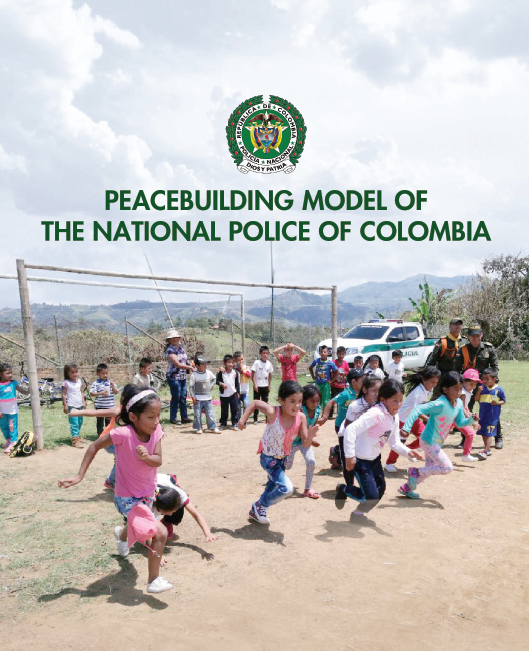
Interpeace in Colombia
Building peace in Colombia, entails a significant challenge for the National Police to transform itself into an institution that guarantees the necessary conditions for the exercise of all rights and freedoms. From a peacebuilding perspective, signing an agreement that ends the conflict is only the first step in a long process to build lasting peace.
Therefore, in order to adjust to the new challenges derived from the post-conflict scenario, the National Police of Colombia have transitioned to fostering and enabling a peaceful transformation of conflicts, as part of its institutional policies. For this reason, supporting the Colombian National Police was strategically valuable for Interpeace and Alianza para la Paz. Working with the Colombian National Police contributes to the non-recurrence of armed violence and reduces the emergence of new forms of violence and criminality.
Peacebuilding Model
The Peacebuilding Model is the result of a broad and participatory consultation process at all levels of the police, where the responsibilities and the commitments of the institution were identified based on the six points of the Final Peace Agreement. Through this systematization process, the guidelines that the Police should implement were established to ensure a compliance with their responsibilities towards the Final Peace Agreement and their contribution to building lasting peace. The Model has an Implementation plan that contains 26 projects, 22 actions and 12 recommendations, which will be deployed at the institutional level of the Police, the defense sector (military forces) and with other State institutions linked to the implementation of the Final Peace Agreement.
The Peacebuilding Model of the National Police lays the groundwork for a long-term transformation process aimed at adapting the institution to the new challenges posed by the post-conflict scenario. Therefore, once the Model has been institutionalized, Interpeace and Alianza para la Paz, will accompany UNIPEP in the challenge of monitoring and evaluating the effective implementation of the projects, actions and recommendations of this model. This also implies the technical support for the deployment in the defense and interinstitutional sectors, during the implementation of the Peacebuilding Model.
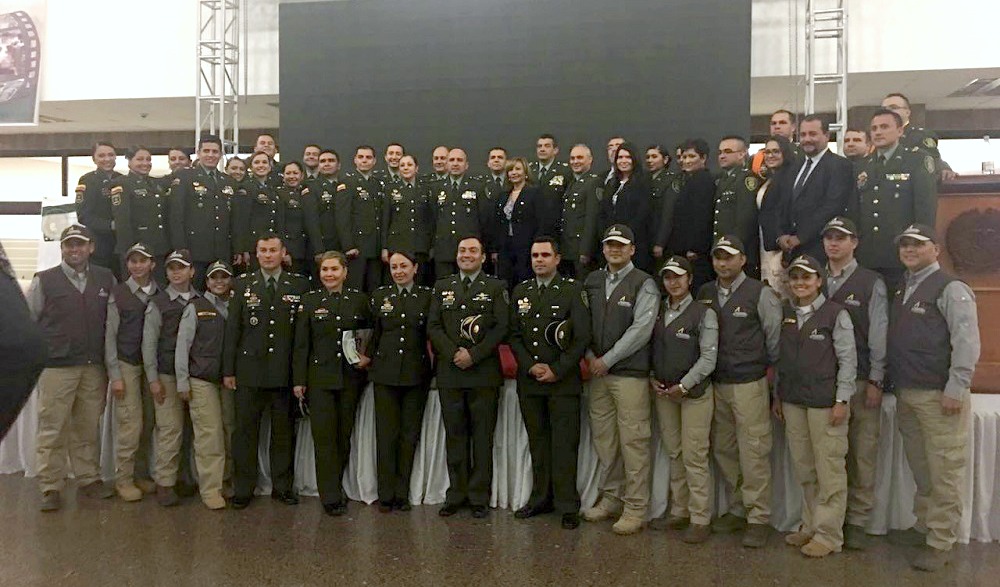
Launch of the Peacebuilding Model of the Colombian National Police. Bogotá, Colombia. Photo credit: Interpeace
Launch of the Peacebuilding Model
On Wednesday May 3, 2017, within the framework of the project "Strategic Peacebuilding Route for the Colombian National Police" implemented by Interpeace and Alianza para la Paz, UNIPEP gave a presentation of the work developed in its first year of management, which included the institutional presentation of the Peacebuilding Model of the Colombian National Police.
This event was chaired by Major General Jorge Hernando Nieto Rojas, Director of the National Police of Colombia, and was attended by different representatives and commissioners of Ministries, diplomats, public and private entities, among other guests.
In conflict-affected countries, access to independent information and news can be threatened by political and economic elites. In these contexts, manipulation of the media and stigmatization can create more division and mistrust between communities. To envision sustainable development and the possibility of lasting peace in these vulnerable contexts, support to free and professional media that enables democratic dialogue is a priority. Fostering an environment of trust through dialogue is a core objective of both Interpeace and Fondation Hirondelle, who have over forty years of combined experience promoting conflict resolution in fragile countries around the world.
On May 4, 2017 Interpeace signed a partnership with Fondation Hirondelle, to strengthen our collaboration working in societies affected by conflict. This partnership will create new and stronger alliances between journalists, researchers, peacebuilders and local communities, to jointly foster open dialogue and access to independent information, in order to help build more democratic and peaceful societies.
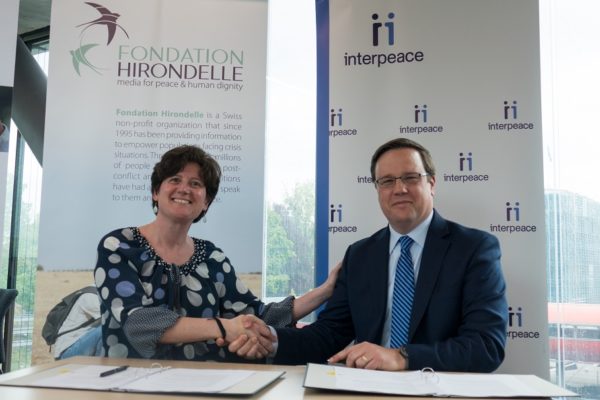
Caroline Vuillemin, Director-General of Fondation Hirondelle and Scott M. Weber, Director-General of Interpeace. Photo credit: ©Fondation Hirondelle/Fabian Jobin
As stated by Scott M. Weber, Director-General of Interpeace: “One of the key aspects of a more peaceful society is one where there is greater transparency and accountability of the authorities and of the information that is available.”
Fondation Hirondelle is a Swiss organization of journalists and humanitarian aid professionals, that creates and supports independent media in contexts facing crises, enabling citizens to hold their leaders and institutions accountable, as well as providing an open space to discuss and reflect on pressing issues. Meanwhile, Interpeace works to facilitate dialogue processes that allows all members of society to participate in transforming conflict. Therefore, by combining our experience and expertise, Interpeace and Fondation Hirondelle will seek to enhance the way people in vulnerable contexts generate and receive information.
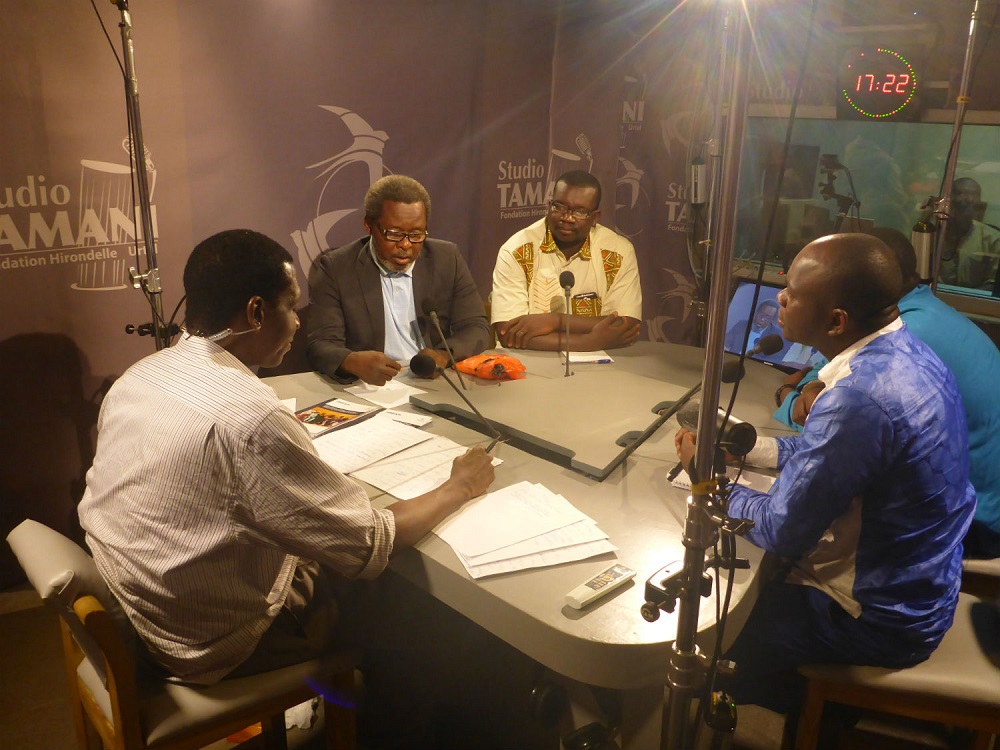
Studio Tamani in Mali. Photo credit: Fondation Hirondelle
Interpeace began working with Fondation Hirondelle in 2013 during the Malian crisis, to support the development of a national scale citizen dialogue. Together with our local partner the Malian Institute of Action Research for Peace (IMRAP), Interpeace launched a participatory and inclusive research process that involved almost 10,000 people across the country. This research was published in a report and film called “Self-Portrait of Mali on the Obstacles to Peace.”
The results and lessons learned from this research were presented and discussed on the radio program Studio Tamani, which was created by Fondation Hirondelle, in partnership with Interpeace and supported by the European Union. Through this independent radio program, a culture of democratic debate began to emerge in Mali, where journalists, researchers and local actors exposed and informed the population of the major causes of crisis in the region and the possible solutions to build peace in the country.
Due to the success of this collaboration in Mali, Interpeace and Fondation Hirondelle will continue to work together, supporting regions in conflict build more democratic and inclusive societies. Caroline Vuillemin, Director-General of Fondation Hirondelle, describes: “With Interpeace working from the ground, bringing up solutions from the people and Hirondelle’s media in the country giving these messages a national reach and a wider audience, we can together act to promote and build lasting peace.”
A message from Caroline Vuillemin, Director-General of Fondation Hirondelle and Scott M. Weber, Director-General of Interpeace:
Journalism for peace
Freedom of speech is not only a human right, it’s an essential part of democracy. The right to voice our opinions and have access to unbiased information, gives us the opportunity to hold leaders and institutions accountable, strengthening societies and fostering social cohesion. Every year on May 3, we celebrate World Press Freedom Day, commemorating the right to freedom of expression through any type of media, defending journalists from attacks on their independence. As we have witnessed working in vulnerable contexts around the world, ethical and independent journalism has the power to tackle exclusion, help prevent violence and contribute to foster and enable peace.
Therefore, in addition to informing people, journalism can shape and spread values, defuse tensions, and counter hate-speech, providing an array of different views and opinions. Through its capacity to investigate, journalism can help people question established ideas and reflect on pressing issues. On the other hand, the way certain information is distributed can also contribute to escalate conflict, providing information that is manipulated by those in power, and instead of revealing the truth, is used for propaganda purposes. In this sense, journalism and mass media greatly shape and impact societies – playing a key role in positive social and political transformations around the world, but also fueling negative stigmas and stereotypes, which contribute to cycles of violence and conflict.
If we understand peace as a process to transform conflict, we must consider that this is not possible without access to independent information. Therefore, much interest has been placed on the challenges journalists are faced with in violent and conflict driven regions, and the role they can play to build and sustain peace. UNESCO sees the rights of press freedom and freedom of information as a crucial foundation of democracy, dialogue and development. Moreover, considers these rights as preconditions to protect and promote all other human rights.
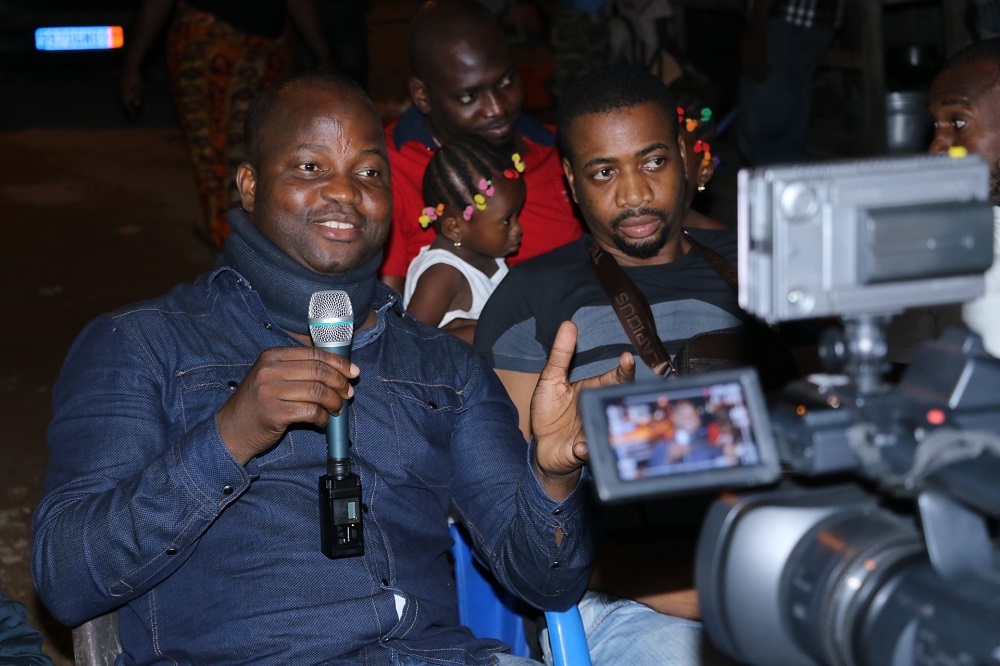
Mali. Photo credit: IMRAP
Ethical journalism
Accuracy, independence, objectivity and accountability are amongst the most important principles of responsible journalism. Consequently, journalists must be rigorous in their duty to provide all relevant facts, assuring that their voice does not tailor to the special interests and needs of corporate and political leaders, and consciously portray the context of every story. If the practice of journalism does not adhere to these principles, it may risk depicting only one side of the story and may fail to convey an honest narrative that acknowledges the complex and numerous social, economic, cultural and political factors that contribute to conflict, and therefore may contribute to criminalize and stigmatize the most vulnerable groups.
With over 20 years of experience working to build peace around the world, Interpeace has recognized the power of journalism and media to rebuild bonds of trust and mutual understanding in vulnerable contexts, as it has helped to dismantle prejudice, through knowledge. If journalists adhere to strict codes of conduct, the possibility to generate positive transformations in societies is immensurable.
The role of journalism in preventing violence
Journalism that contributes to peace, focuses on trying to humanize all victims of a conflict, seeking to uncover the complexities behind violent driven situations. In this sense, journalists do not exploit suffering and loss, they seek to convey a balanced account of the information. In Central America, there has been a rise in the development of independent, digital newspapers that are helping citizens hold political leaders accountable, contributing to raise awareness on sensitive and complex realities in the region. Nonetheless, the way that certain social phenomena has been explained in traditional mass media has in some cases, contributed to exacerbate social conflicts. Explaining violence in a simplistic way, constantly generalizing, without truly conveying the full picture, has impacted at-risk youth, who already suffer from marginalization and exclusion.
In 2011, within the framework of the International Conference to Support the Central American Security Strategy, promoted by the Central American Integration System (SICA), the first regional media forum on “Mass Media, Democratic Security and Violence Prevention,” took place in Guatemala, jointly organized by Interpeace’s Regional Office for Latin America. Journalists representing each country in Central America had the unique opportunity to have a dialogue with representatives of civil society. Through an open discussion, they were able to reflect on the influence that mass media has in defining and portraying violence in the region, and the impact journalism has in constructing people’s perceptions of reality.
As a follow up in 2013, Interpeace, the Central American Program for the Control of Small Arms and Light Weapons (CASAC / SG-SICA), the digital newspaper Plaza Pública and the Austrian Development Cooperation (CAD), organized a regional workshop called “The role of Journalism in the Prevention of Violence.” Through this workshop, journalists, representatives of civil society, government and the international community, jointly developed a strategic agenda to help foster the practice of journalism to promote peace in the region. Emphasizing how journalism can help break social stigmas and misconceptions, by conveying stories that are sensitive to the pain of the victims, sensitive to the human rights of perpetrators and knowledgeable of the profound impact their words and statements have on the population.
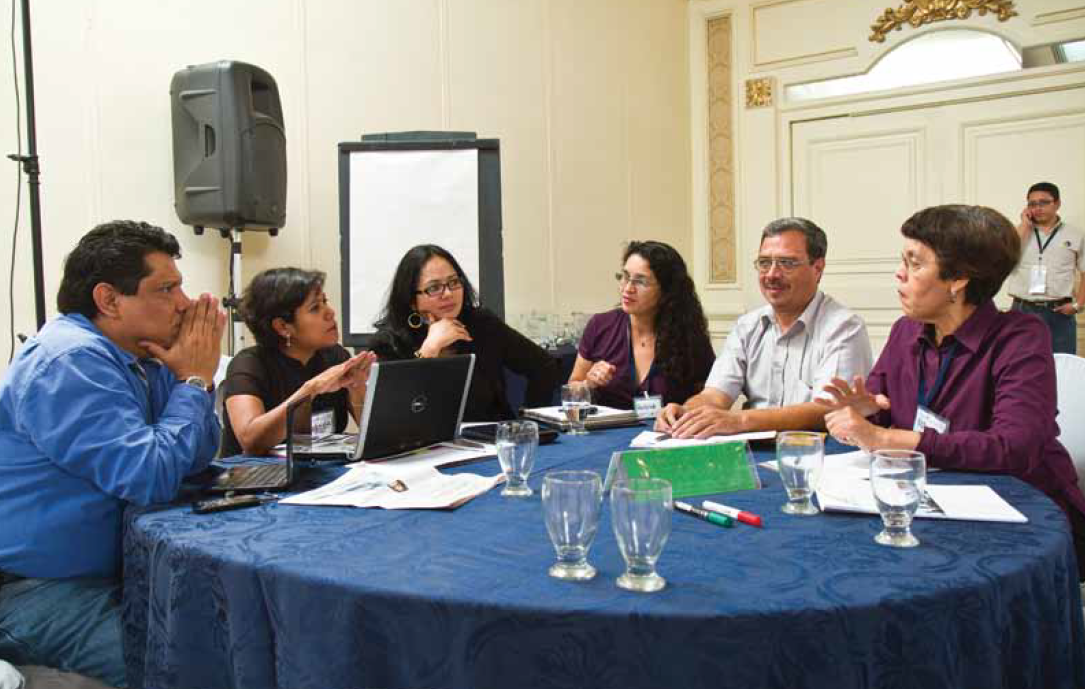
Guatemala. Photo credit: Interpeace
Shifting narratives
In Honduras, young men and women that are members of youth groups called barras, have become victims of stigmatization and criminalization. Barras have been compared to street gangs in Central America, when essentially, they are sports clubs supporting a local football team. However, because of weak institutions to manage conflicts, the natural rivalry that begins amongst fans of opposite teams, has transcended stadiums and has become a serious social problem. This is aggravated by the fact that football (soccer) is one of the activities in Honduras that is given considerable media attention. In this way, the young members of barras are permanently in the public eye, associated less with the sport and more with the general violence perpetrated in the streets.
As part of the efforts to deepen the work that started with “Sports Clubs for Peace,” on November 2016, Interpeace launched the project “Journalism, youth and sports for peace in Honduras” in alliance with Free Press Unlimited and the Central American digital newspapers El Faro, Nómada, and Plaza Pública. The objective is to contribute to the non-violent transformation of conflicts by changing perceptions and reducing the stigmatization of young people in Honduras.
The project provides training and technical support to the young members of the barras. This helps them develop their own digital media, and become producers and protagonists of alternative narratives that have a positive impact on the media, opinion leaders, politicians, civil society and the private sector. The project aims at establishing channels of communication between the different levels of society to better understand the phenomenon of violence, its causes and contribute to the transformation of the perceptions that the public has about marginalized youth.
Listening to the voice, the human dimension and the story of young people immersed in cycles of violence, is an essential step for building peace in Honduras.
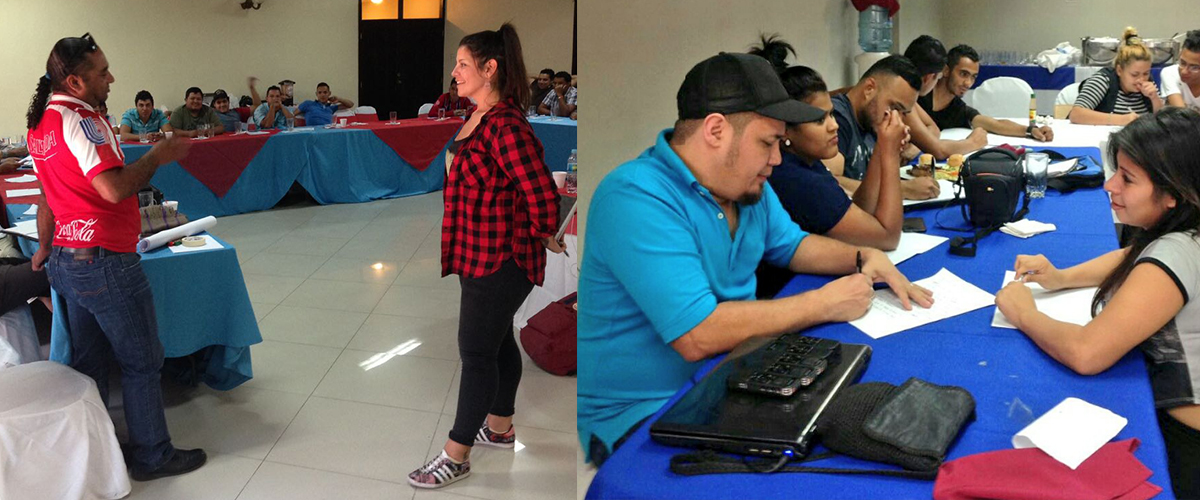
Honduras. Photo credit: Interpeace
Strengthening democracy through empowered women
Providing women with tools to improve their capacities as story tellers in contexts where women’s voices are repressed and underrepresented, has proven to be a source of empowerment and resilience. In 2013, our local partner, the Puntland Development Research Center (PDRC) worked with the Nugal Women Journalists (NUWOJO) in the Somali region. The NUWOJO is a group of young women who have completed their training as journalists and formed the organization to advocate for a better female representation in the media sector. Although Puntland has undergone important changes in the past two decades, developing several radio stations, newspapers and television channels, the media sector is the most male-dominated business in Puntland with more than 87% male staff.
Through workshops with NUWOJO, PDRC provided this group of young women with a unique opportunity to get hands-on experience on media production, since most of them had received only theoretical training. The workshop highlighted the role that journalists can play in conflict resolution and the potential to contribute to peacebuilding, emphasizing the importance of providing accurate and unbiased information, building confidence and correcting misconceptions. Moreover, a major component of the workshop was devoted to gender mainstreaming, providing them with an understanding of the media’s crucial role in defining how women are perceived in society.
This workshop was part of Interpeace’s effort to support the development of the media in the Somali region, highlighting the important role of women in peacebuilding, bearing in mind the significance of female presence in mass media.
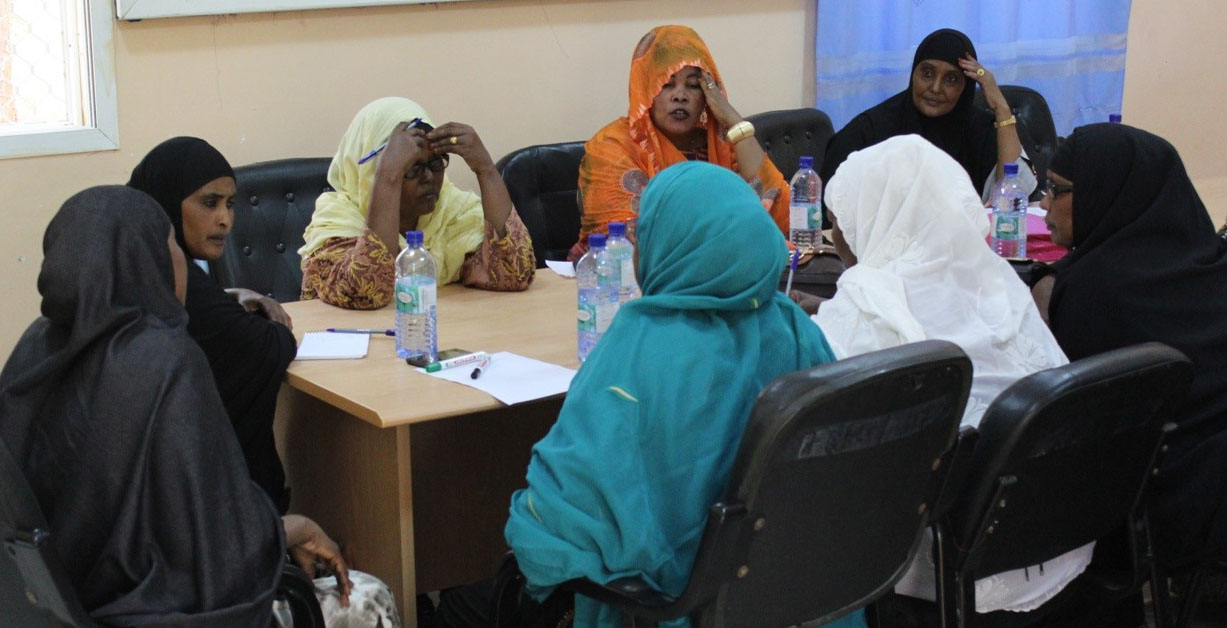
Puntland. Photo credit: PDRC
A virtual dialogue
During the 2013 Malian crisis, Interpeace and Fondation Hirondelle, a Swiss organization of journalists and humanitarian aid professionals, joined forces to promote the development of a national scale citizen dialogue. Through the radio programme, Studio Tamani, created by Fondation Hirondelle, a culture of democratic debate began to gradually emerge, where Malians were able to identify the obstacles and priorities for peace. Our local partner Malian Institute of Action Research for Peace (IMRAP), regularly contributes to Studio Tamani’s programming.
Studio Tamani provides a type of journalism that is far more credible in the eyes of the public, because it gives a voice to all Malians. Each day over 1.6 million listeners tune in, to hear the dialogues about conflict resolution, and the results of field research and population analysis on the root causes of conflicts, and opportunities for peace in the country. Therefore, journalists, researchers and communities are working together to expose and inform the major causes of crisis in the region.
Due to the success of this collaboration, Interpeace and Fondation Hirondelle are strengthening their partnership, in order to foster new bridges between journalists, peacebuilders and local actors in other parts of the world.
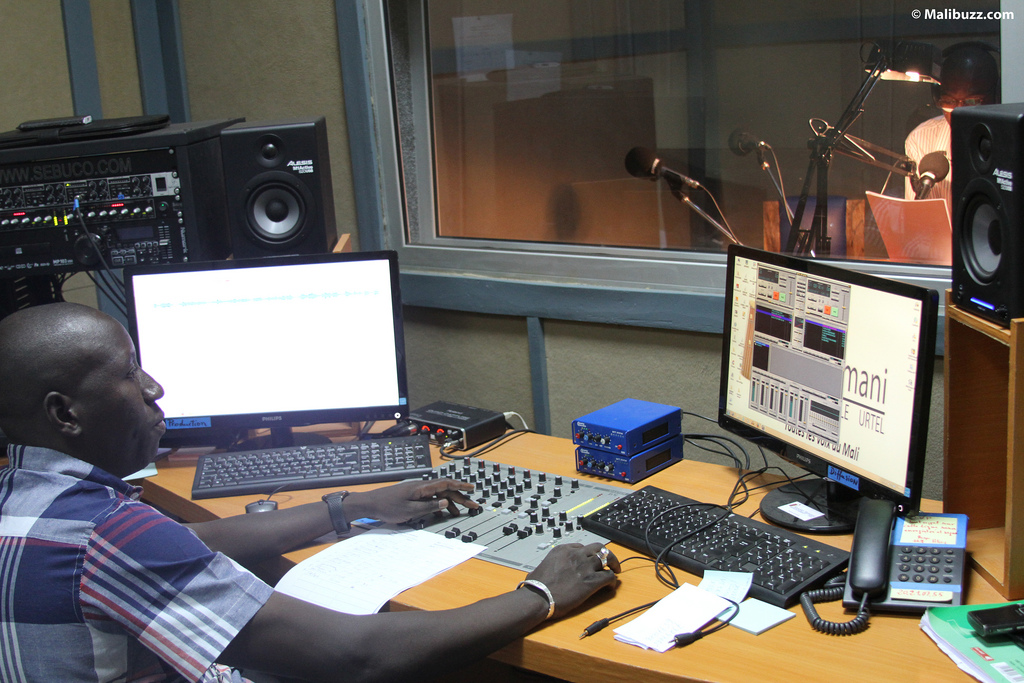
Mali. Photo credit: Mali buzz
Visible peace
Access to information is an invaluable element that helps societies transition from the use of violence to solve conflicts, to strengthening their already existing capacities to transform conflicts in a peaceful way. As we witnessed through our Frameworks for Assessing Resilience (FAR) programme piloted in Guatemala, Liberia and Timor-Leste, even in the most vulnerable circumstances, there are individuals and communities acting to counter the effects and causes of conflict. We have observed that, while mass media can show the devastating consequences of violence, they can also strive to comprehensively discuss the causes of conflict and offer narratives of peace, that convey these positive and resilient actions.
Striving for visible peace in mass media is not about eliminating narratives of violence and conflict, it’s about making a conscious effort to also include the narratives of hope and actions of peace that counteract violence, therefore illustrating the full picture. Because even though violent acts occur around the world, there is an even greater number of people working to build and sustain peace. In this sense, peace must also occupy the pages of newspapers, to ensure a balanced portrayal of reality, which includes both stories of violence and stories of peace.

